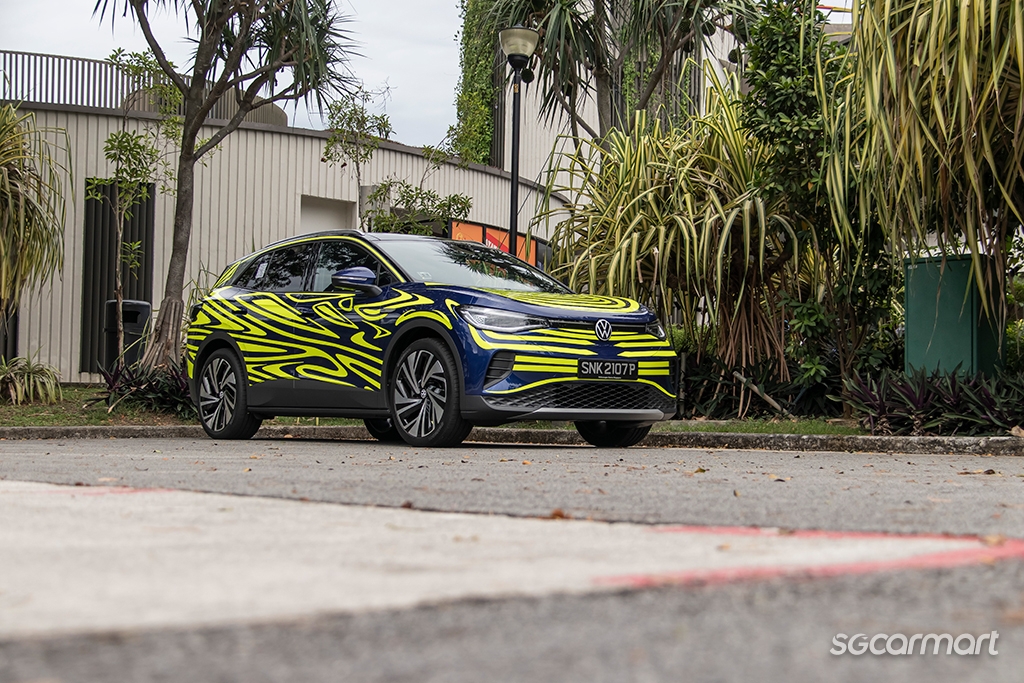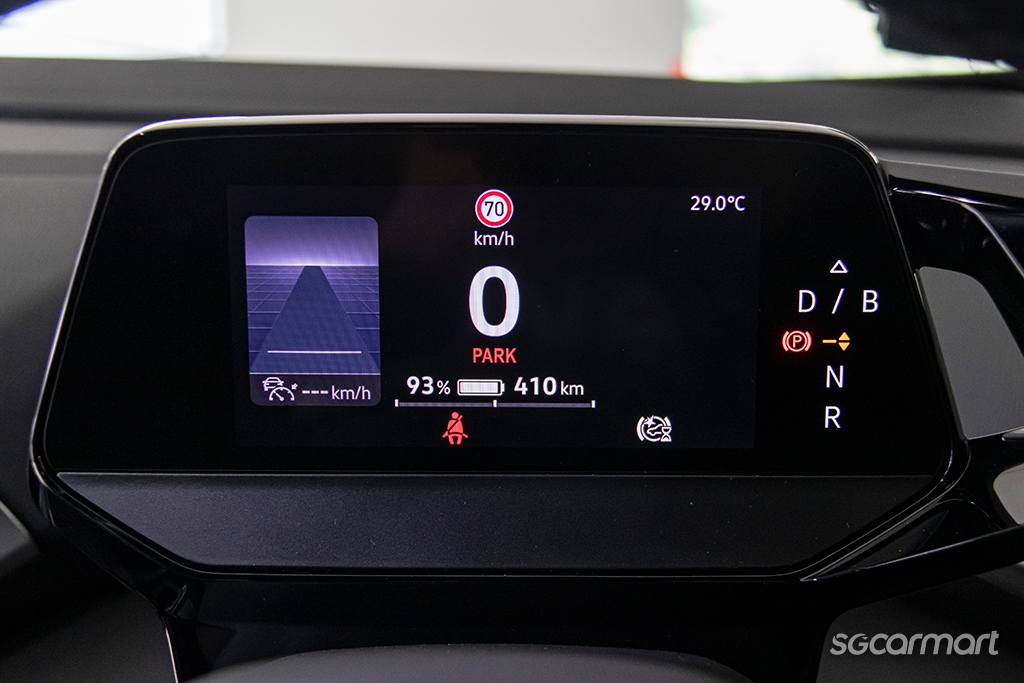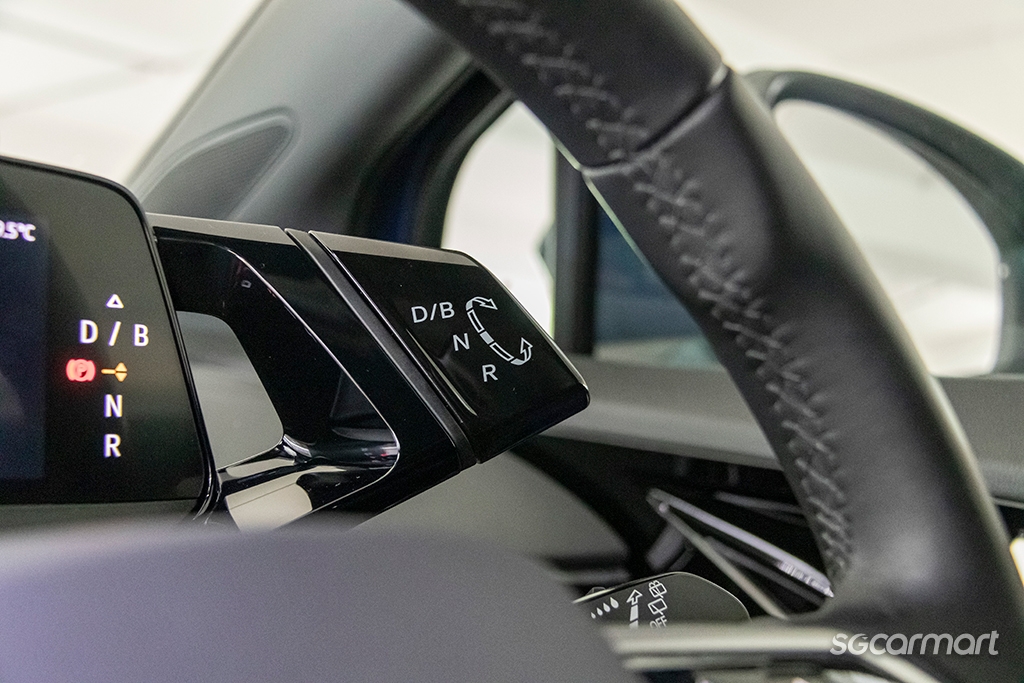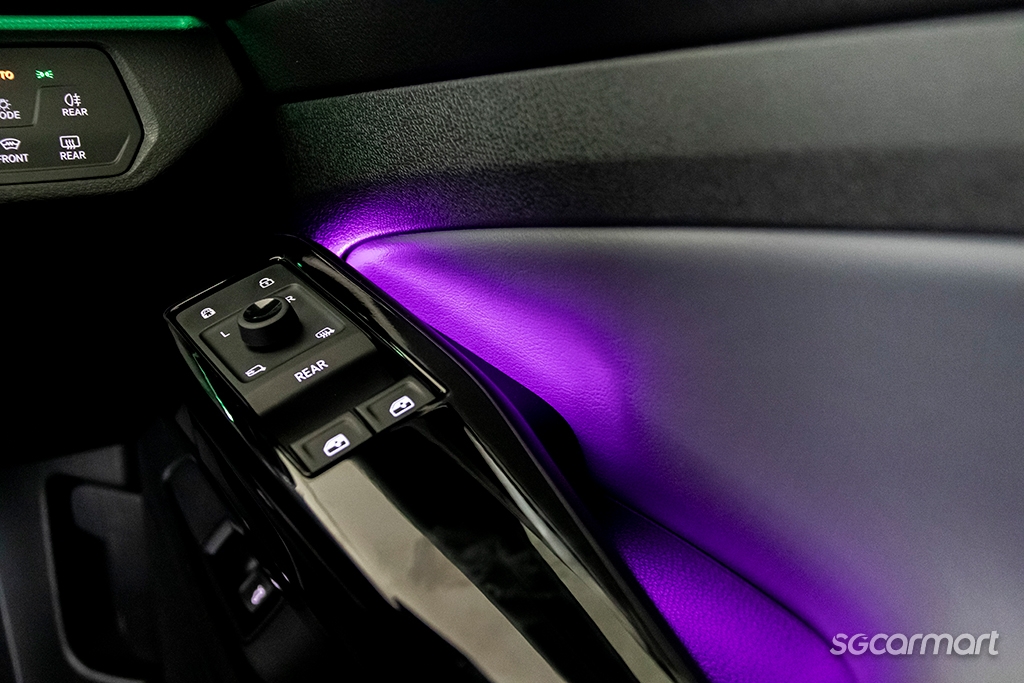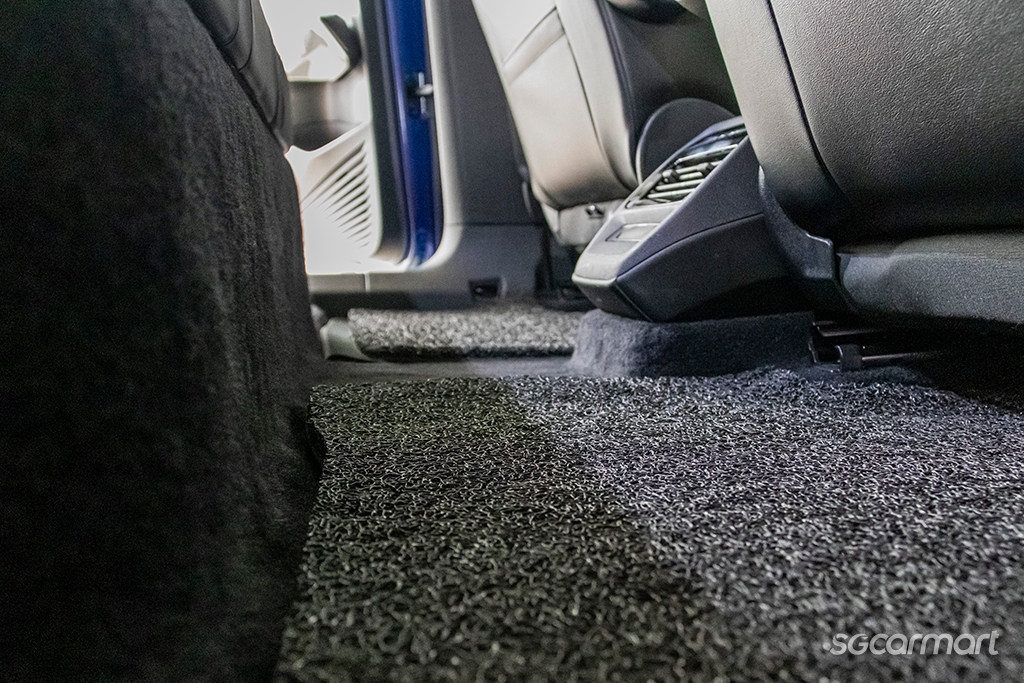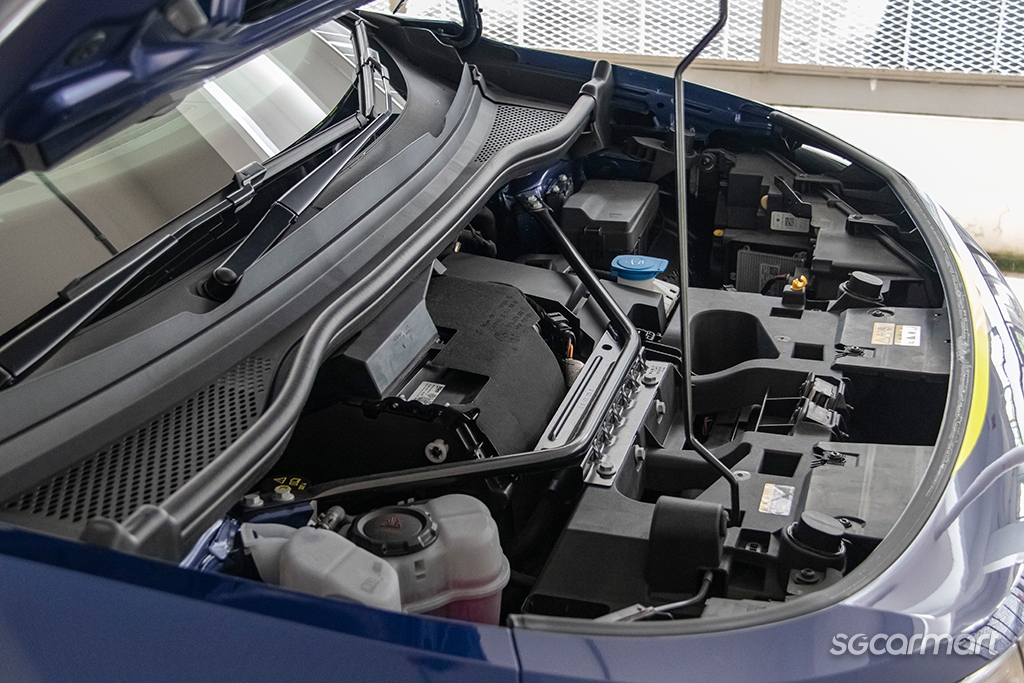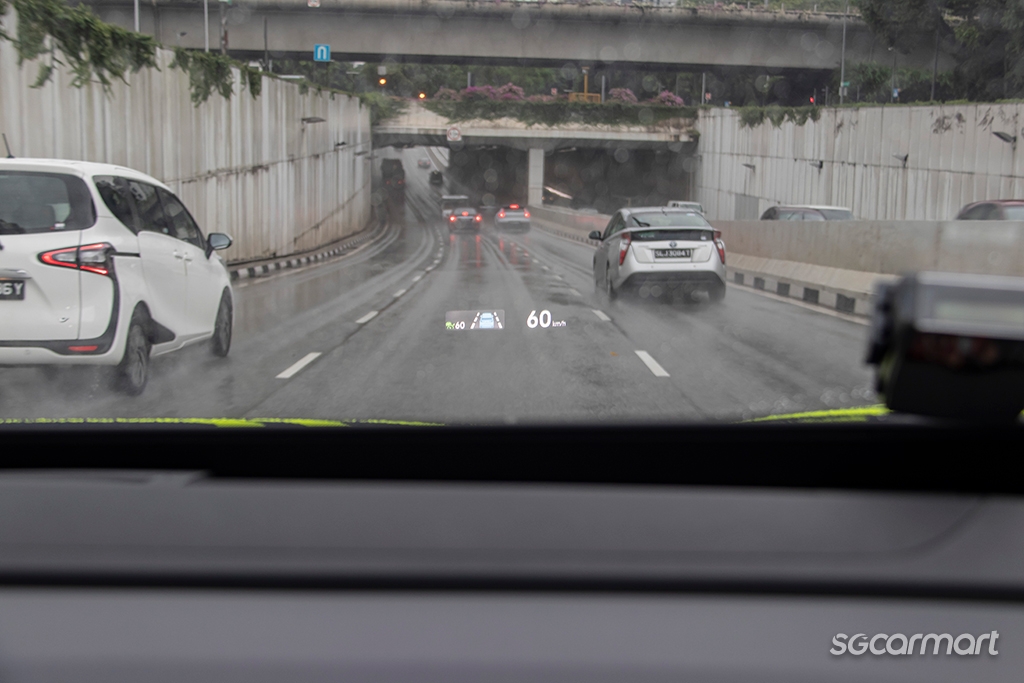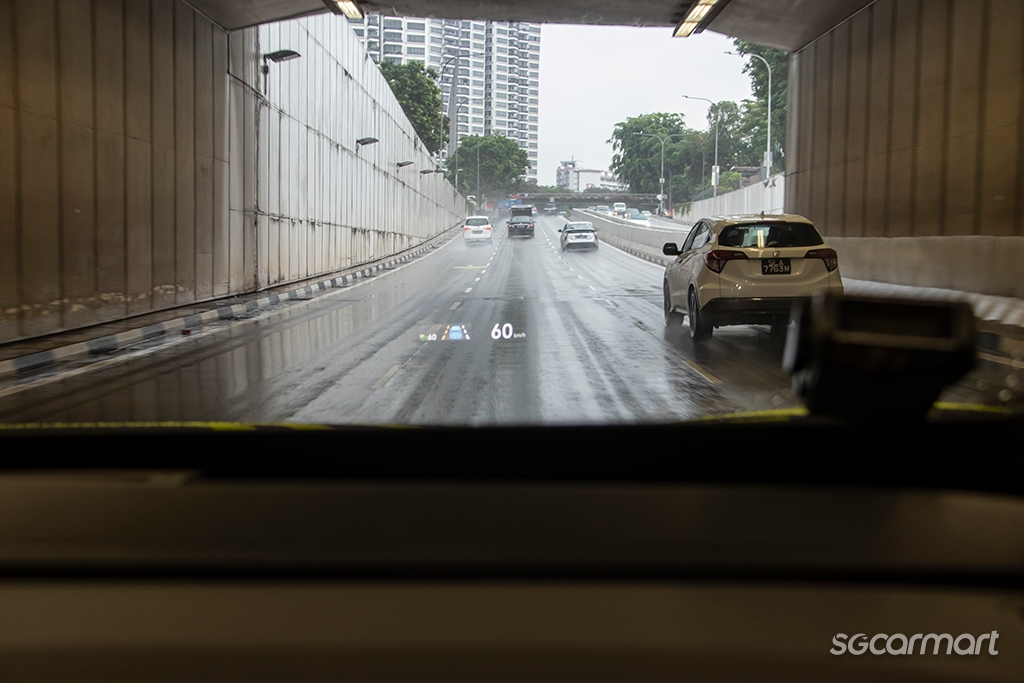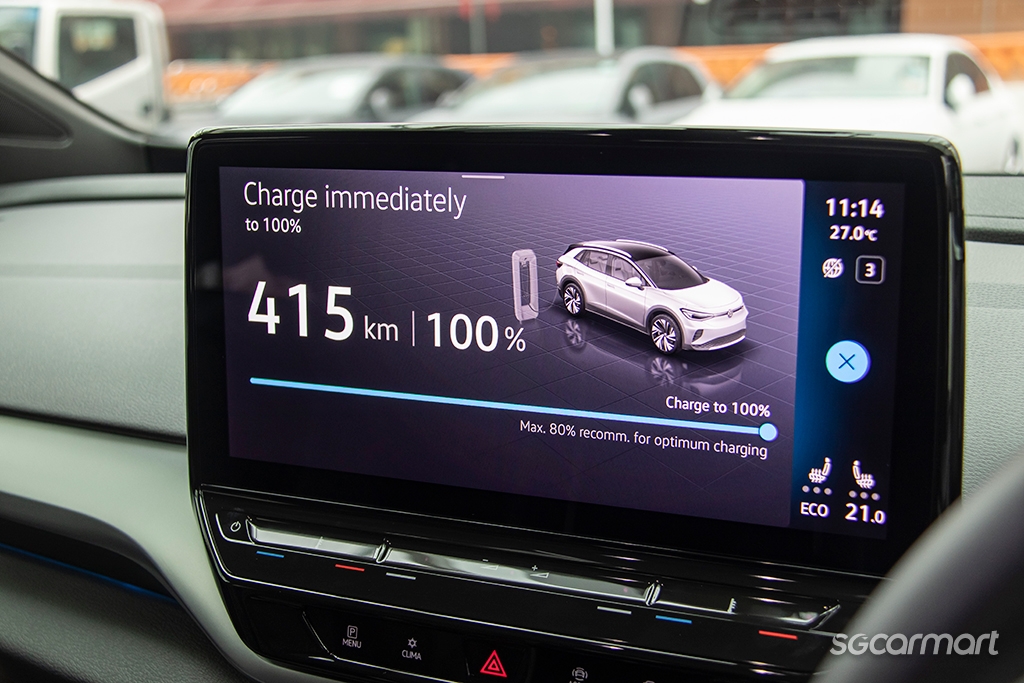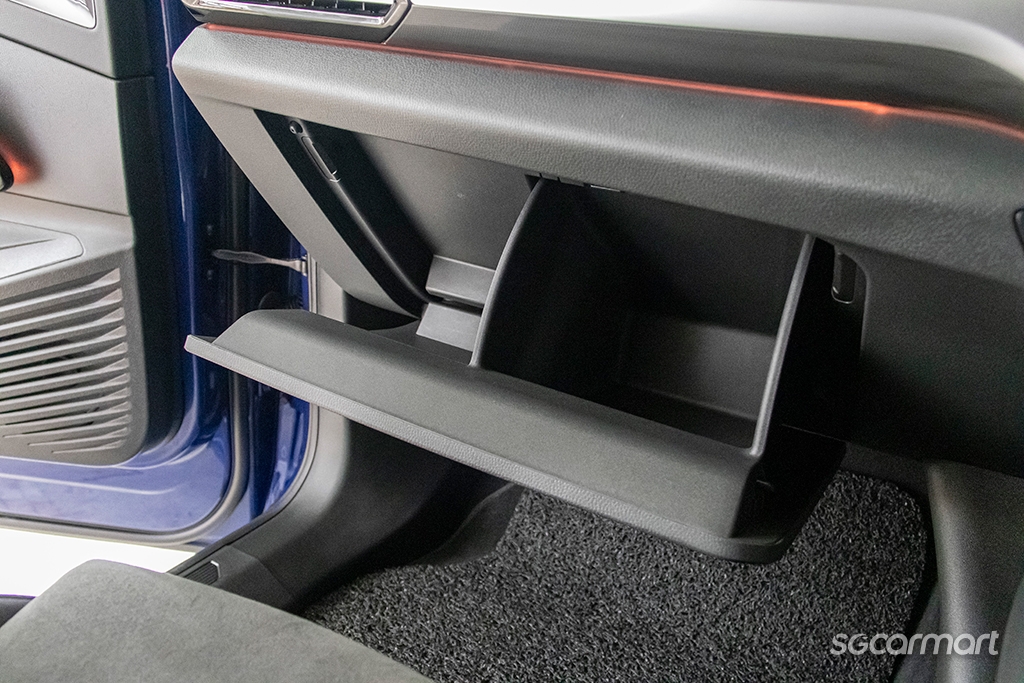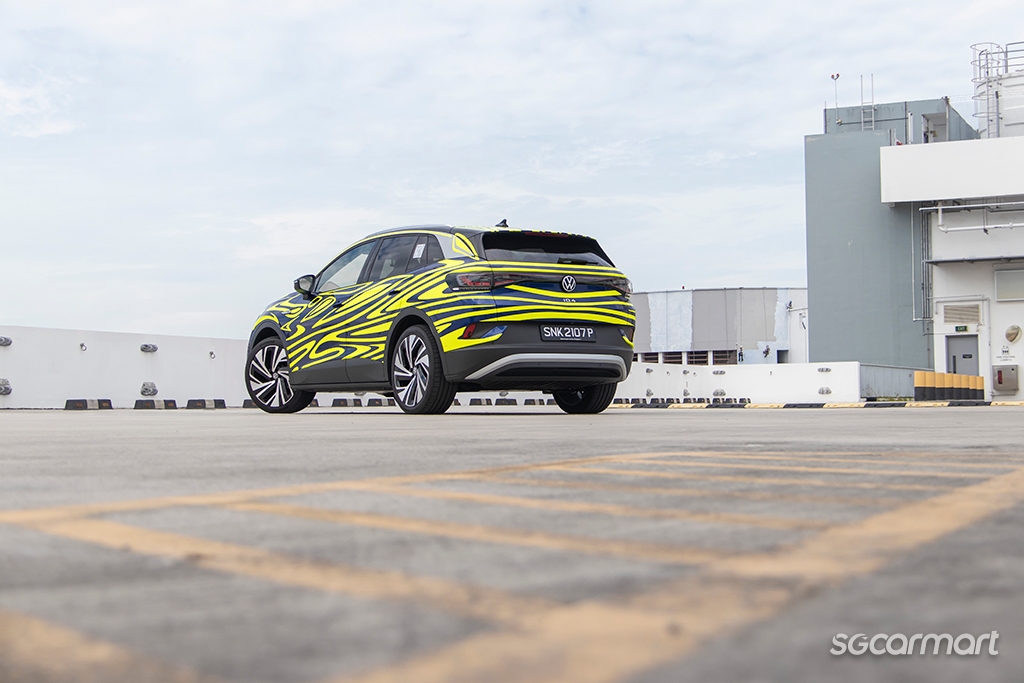Volkswagen ID.4 Pro 77kWh First Drive Review
05 Jul 2023|7,970 views
What We Like
Spacious and comfortable cabin
Good amount of power
Reasonable 400km range on a full charge
Interesting and different
What We Dislike
Takes time to get used to
Digitalised controls feel overly complicated
"That's unusual."
I found myself uttering (or thinking) that quite a few times while driving this brand new Volkswagen ID.4.
This is VW's vision of electric mobility for the masses - a practical, accessible, and (relatively) affordable crossover. Which, yes, isn't exactly a Golf gone electric (that’s effectively the remit of the ID.3). So why this ID.4? Because everyone wants an SUV these days, so an SUV it is.
But, how good is it?
Unlike what you know
The atypical nature of the car starts from the outside. Neon yellow stickers aside, the ID.4 is all swoopy lines and organic shapes. It certainly looks futuristic, but rather contrary to the sharp edges we're seeing on most modern SUVs.
It's also quite big. Size-wise, this is about Tiguan-sized, but because this is a dedicated EV platform (MEB, the same one underpinning a bunch of other VW Group EVs), wheelbase is a generous 2,771mm, which is almost 100mm more than said Tiguan.
That translates to ample room on the inside. Rear passengers benefit from a completely flat floor, so three will fit abreast very comfortably.
Features you won't be familiar with in a VW include the instrument cluster mounted onto the steering column, and the gear shifter right next to it
From the driver's seat, it's again remarkably different from a 'traditional' VW interior. The digital cluster is almost comically small, and mounted onto the steering column so it all moves together (similar to MINIs these days). The gear shifter is also attached to the side of said cluster (like an i3), but because it can be obscured by the steering wheel, you would want time to memorise which way is Drive (up) and which way is Reverse (down).
I personally found myself mixing it up a couple of times, but I chalk this down to the fact that the only other carmaker that commonly uses a steering mounted gearshifter (Mercedes-Benz) has the controls the other way round (D is down, R is up).
Thanks to pretty ambient lighting and a commodious rear cabin (helped by a fully flat floor), passengers will be delightfully comfortable in the ID.4
The plus side of not having a gearbox is that the entire centre console can be transformed. And here, it is. It sits low to the ground, and as there's no gear stick protruding out of it, the consequent feeling is one of ample space, further accentuating the spaciousness of the ID.4's cabin.
Other unusual details? There are only two window switches. So, if you want to open/close the rear windows from the driver's seat, you actually have to press a 'Rear' control (not a physical button), before then operating the same switches. It's, I don't know, unnecessarily digitalised.
That quibble extends to other bits as well. The infotainment system, while pretty, is quite complex, especially as many often-used functions are housed strictly within. The touch slider controls are finicky, and I will point out that they are not illuminated so at night you can't easily see them. Overall, there's too much touchscreen prodding and sliding for my taste.
Unlike what you feel
On the road, the ID.4 feels familiar in general EV ways, but in specific ways also quite unusual.
Available power is plenty - this is an EV after all. However, power delivery is more measured than instant. You don't get that immediate 'kick' you'd typically expect in an EV. The car is plenty quick, but power is doled out in a more progressive manner.
And, we have to talk about the brakes. For people hopping in for the first time, the brakes may come across as weak. Press down and there's what feels like a fair bit of dead zone before you really start feeling the car shed speed.
The head-up display has an augmented reality function that can 'track' cars in front of you when using adaptive cruise control, and also indicates when the lane assist function is activated
But, and it's a big but, it's also worth considering the nature of this car. This is a rear-wheel drive EV, and a lot of the initial braking is done with regenerative braking. I can sort of understand the rationale behind not having very 'bitey' braking on the rear axle of a heavy, RWD car, especially if you consider that many places the ID.4 will exist in have something called winter.
Yes, in Singapore braking is mostly done in a straight line, but braking mid-corner on windy German mountain roads in 0 degree weather, you really do want more progressive braking. In some ways, it's the same reason why front brakes on a motorbike are a lot bigger than the rear ones.
Besides that, the rest of the experience is comfortably familiar. The overall ride is soft, so quite comfortable except over the biggest bumps, and noise insulation is good. It's quite a serene drive, all things considered.
I managed a real-world consumption figure of 5.1km/kWh, but with more judicious driving a real-world range of over 400km on a full charge is certainly achievable
I will also point out that the car feels big. Visibility across the heavily raked A-pillar is not the best, and I also wonder if the cavernous nature of the interior space actually creates a feeling or sense of size that affects your external perception.
One thing I do particularly like is that when you park, once you've finished reversing and the auto-hold function is activated, you can quite literally just open the door, get out, and leave. No need to even engage park or turn off the car. That's great.
As far as range goes, over a weekend of driving I managed to clock 5.1km/kWh, which would put me at around 395km on a full charge (not too far from VW's quoted 430-460km). For a car in this class, that's a perfectly reasonable figure, also taking into account that I did not do that much highway driving.
The car is full of quirky details, like the play/pause pedals, and the fact that you have what appears to be half a glovebox
Takes a little while
Because of the unusualness of the car, the ID.4 does not make the greatest first impression. I first drove this car a week ago for roughly 20 minutes, and I came away with more questions than answers.
But, having spent more time with it, it starts to grow on you.
Overall, there is a certain laid-back nature to the ID.4 that's perhaps unusual among EVs. Most EVs shout about instant performance and flashy tech. This ID.4 doesn't. It's much more concerned with easing people into the electric experience. And again, I think this is something that makes more sense the more you think about it. I'm a big proponent that we shouldn't just suddenly be giving everyone hot hatch performance, because accidents will surely go up.
And having spent a full weekend with the car, I am enjoying the experience. It's not perfect (there are features I'm still not that keen on), but overall it is a genuinely useful, practical and quite delightful EV.
However, there are two important things that are preventing us from fully and properly evaluating this car.
First is spec. This car, while homologated, isn't the final specification that will be offered to customers. VW is still in the process of talking to the factory about that. This particular car is the Pro variant, which is basically as decked out as it can be.
I would suggest to keep the specification on the lower side (there are features that I think are not necessary, like DCC, heated seats/steering, 21-inch wheels, Matrix head lights), and this directly impacts the second factor.
That is, of course, price. We don't have a pricing on this car yet, and I do suspect that pricing will be a key factor in determining the ID.4's success in Singapore.
If you look around the market right now, EVs can broadly be categorised into three groups - sub-$200k (Asian makes), $200k to $300k (premium Asian makes, Tesla, Volvo, Polestar), and above-$300k (the premium/luxury brands, basically).
The ID.4 will fall into that middle category, but where exactly? We don't know for sure yet, but here's hoping that its closer to low-200s than high-200s.
So yes, on first glance the new ID.4 is rather unusual. Spend more time with it, however, and it gradually makes more and more sense. Let's just hope that when its officially launched, pricing will be unusually affordable, too.
Check out our first drives of the other EVs from the VW Group!
The ID.4 GTX adds flair and sportiness to the electric SUV formula
The Enyaq dishes up a more familiar experience atop the same MEB platform
What We Like
Spacious and comfortable cabin
Good amount of power
Reasonable 400km range on a full charge
Interesting and different
What We Dislike
Takes time to get used to
Digitalised controls feel overly complicated
"That's unusual."
I found myself uttering (or thinking) that quite a few times while driving this brand new Volkswagen ID.4.
This is VW's vision of electric mobility for the masses - a practical, accessible, and (relatively) affordable crossover. Which, yes, isn't exactly a Golf gone electric (that’s effectively the remit of the ID.3). So why this ID.4? Because everyone wants an SUV these days, so an SUV it is.
But, how good is it?
Unlike what you know
The atypical nature of the car starts from the outside. Neon yellow stickers aside, the ID.4 is all swoopy lines and organic shapes. It certainly looks futuristic, but rather contrary to the sharp edges we're seeing on most modern SUVs.
It's also quite big. Size-wise, this is about Tiguan-sized, but because this is a dedicated EV platform (MEB, the same one underpinning a bunch of other VW Group EVs), wheelbase is a generous 2,771mm, which is almost 100mm more than said Tiguan.
That translates to ample room on the inside. Rear passengers benefit from a completely flat floor, so three will fit abreast very comfortably.
Features you won't be familiar with in a VW include the instrument cluster mounted onto the steering column, and the gear shifter right next to it
From the driver's seat, it's again remarkably different from a 'traditional' VW interior. The digital cluster is almost comically small, and mounted onto the steering column so it all moves together (similar to MINIs these days). The gear shifter is also attached to the side of said cluster (like an i3), but because it can be obscured by the steering wheel, you would want time to memorise which way is Drive (up) and which way is Reverse (down).
I personally found myself mixing it up a couple of times, but I chalk this down to the fact that the only other carmaker that commonly uses a steering mounted gearshifter (Mercedes-Benz) has the controls the other way round (D is down, R is up).
Thanks to pretty ambient lighting and a commodious rear cabin (helped by a fully flat floor), passengers will be delightfully comfortable in the ID.4
The plus side of not having a gearbox is that the entire centre console can be transformed. And here, it is. It sits low to the ground, and as there's no gear stick protruding out of it, the consequent feeling is one of ample space, further accentuating the spaciousness of the ID.4's cabin.
Other unusual details? There are only two window switches. So, if you want to open/close the rear windows from the driver's seat, you actually have to press a 'Rear' control (not a physical button), before then operating the same switches. It's, I don't know, unnecessarily digitalised.
That quibble extends to other bits as well. The infotainment system, while pretty, is quite complex, especially as many often-used functions are housed strictly within. The touch slider controls are finicky, and I will point out that they are not illuminated so at night you can't easily see them. Overall, there's too much touchscreen prodding and sliding for my taste.
Unlike what you feel
On the road, the ID.4 feels familiar in general EV ways, but in specific ways also quite unusual.
Available power is plenty - this is an EV after all. However, power delivery is more measured than instant. You don't get that immediate 'kick' you'd typically expect in an EV. The car is plenty quick, but power is doled out in a more progressive manner.
And, we have to talk about the brakes. For people hopping in for the first time, the brakes may come across as weak. Press down and there's what feels like a fair bit of dead zone before you really start feeling the car shed speed.
The head-up display has an augmented reality function that can 'track' cars in front of you when using adaptive cruise control, and also indicates when the lane assist function is activated
But, and it's a big but, it's also worth considering the nature of this car. This is a rear-wheel drive EV, and a lot of the initial braking is done with regenerative braking. I can sort of understand the rationale behind not having very 'bitey' braking on the rear axle of a heavy, RWD car, especially if you consider that many places the ID.4 will exist in have something called winter.
Yes, in Singapore braking is mostly done in a straight line, but braking mid-corner on windy German mountain roads in 0 degree weather, you really do want more progressive braking. In some ways, it's the same reason why front brakes on a motorbike are a lot bigger than the rear ones.
Besides that, the rest of the experience is comfortably familiar. The overall ride is soft, so quite comfortable except over the biggest bumps, and noise insulation is good. It's quite a serene drive, all things considered.
I managed a real-world consumption figure of 5.1km/kWh, but with more judicious driving a real-world range of over 400km on a full charge is certainly achievable
I will also point out that the car feels big. Visibility across the heavily raked A-pillar is not the best, and I also wonder if the cavernous nature of the interior space actually creates a feeling or sense of size that affects your external perception.
One thing I do particularly like is that when you park, once you've finished reversing and the auto-hold function is activated, you can quite literally just open the door, get out, and leave. No need to even engage park or turn off the car. That's great.
As far as range goes, over a weekend of driving I managed to clock 5.1km/kWh, which would put me at around 395km on a full charge (not too far from VW's quoted 430-460km). For a car in this class, that's a perfectly reasonable figure, also taking into account that I did not do that much highway driving.
The car is full of quirky details, like the play/pause pedals, and the fact that you have what appears to be half a glovebox
Takes a little while
Because of the unusualness of the car, the ID.4 does not make the greatest first impression. I first drove this car a week ago for roughly 20 minutes, and I came away with more questions than answers.
But, having spent more time with it, it starts to grow on you.
Overall, there is a certain laid-back nature to the ID.4 that's perhaps unusual among EVs. Most EVs shout about instant performance and flashy tech. This ID.4 doesn't. It's much more concerned with easing people into the electric experience. And again, I think this is something that makes more sense the more you think about it. I'm a big proponent that we shouldn't just suddenly be giving everyone hot hatch performance, because accidents will surely go up.
And having spent a full weekend with the car, I am enjoying the experience. It's not perfect (there are features I'm still not that keen on), but overall it is a genuinely useful, practical and quite delightful EV.
However, there are two important things that are preventing us from fully and properly evaluating this car.
First is spec. This car, while homologated, isn't the final specification that will be offered to customers. VW is still in the process of talking to the factory about that. This particular car is the Pro variant, which is basically as decked out as it can be.
I would suggest to keep the specification on the lower side (there are features that I think are not necessary, like DCC, heated seats/steering, 21-inch wheels, Matrix head lights), and this directly impacts the second factor.
That is, of course, price. We don't have a pricing on this car yet, and I do suspect that pricing will be a key factor in determining the ID.4's success in Singapore.
If you look around the market right now, EVs can broadly be categorised into three groups - sub-$200k (Asian makes), $200k to $300k (premium Asian makes, Tesla, Volvo, Polestar), and above-$300k (the premium/luxury brands, basically).
The ID.4 will fall into that middle category, but where exactly? We don't know for sure yet, but here's hoping that its closer to low-200s than high-200s.
So yes, on first glance the new ID.4 is rather unusual. Spend more time with it, however, and it gradually makes more and more sense. Let's just hope that when its officially launched, pricing will be unusually affordable, too.
Check out our first drives of the other EVs from the VW Group!
The ID.4 GTX adds flair and sportiness to the electric SUV formula
The Enyaq dishes up a more familiar experience atop the same MEB platform
Thank You For Your Subscription.
- Initial Impressions
- Behind The Wheel
- Positive Growth















































